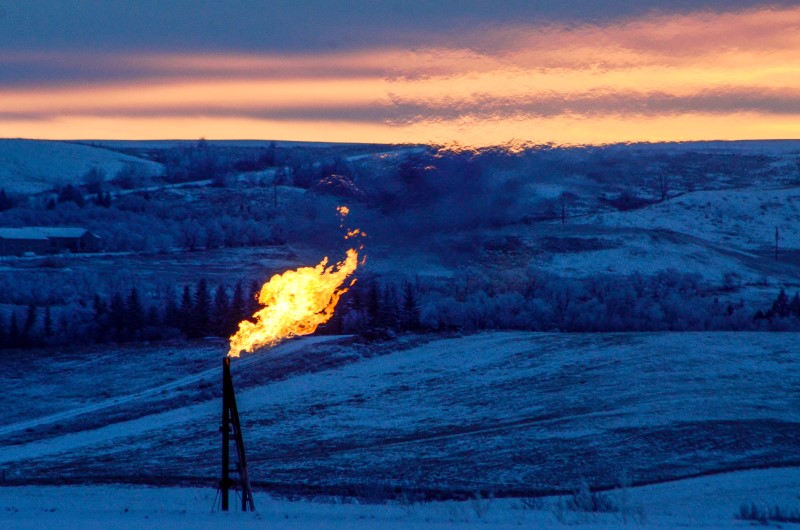Investing.com - U.S. natural gas futures bounced back from the prior session's losses on Tuesday, as hopes for higher heating demand this winter than in the past two winters provided support.
In their latest forecasts, meteorologists at the U.S. National Oceanic and Atmospheric Administration (NOAA) predicted temperatures from November through March would be 13% colder than last winter and close to the average of the previous 10 years.
Traders were optimistic that colder weather would boost heating demand this winter over the prior two snow seasons, which were among the warmest on record.
U.S. natural gas for November delivery jumped 4.5 cents, or around 1.6%, to $2.994 per million British thermal units by 9:00AM ET (1300GMT).
Futures slumped 5.4 cents, or 1.8%, on Monday as traders reacted to forecasts showing a return to mild weather in the eastern U.S. following last week's cold spell.
Gas futures often reach a seasonal low in October, when mild weather weakens demand, before recovering in the winter, when heating-fuel use peaks.
Meanwhile, market participants looked ahead to this week's storage data due on Thursday, which is expected to show a build in a range between 52 and 62 billion cubic feet (bcf) in the week ended October 13.
That compares with a gain of 87 bcf in the preceding week, a build of 77 billion a year earlier and a five-year average rise of 78 bcf.
Total natural gas in storage currently stands at 3.595 trillion cubic feet (tcf), according to the U.S. Energy Information Administration. That figure is 153 bcf, or around 4.1%, lower than levels at this time a year ago and 8 bcf, or roughly 0.2%, below the five-year average for this time of year.
Analysts estimated the amount of gas in storage would end the April-October injection season at 3.8 tcf due primarily to higher liquefied natural gas shipments abroad. That would fall short of the year-earlier record of 4.0 tcf and the five-year average of 3.9 tcf.
